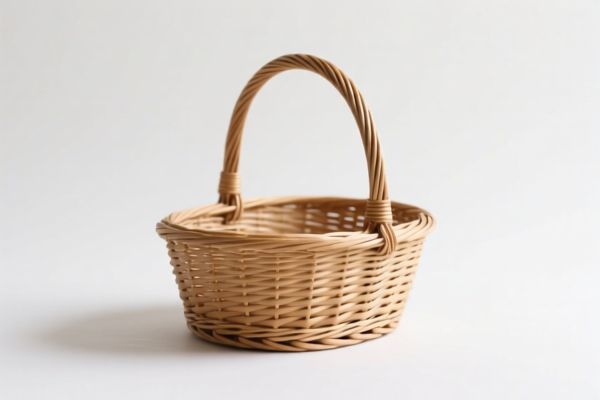| HS Code | Official Doc | Tariff Rate | Origin | Destination | Effective Date |
|---|---|---|---|---|---|
| 8714998000 | Doc | 47.5% | CN | US | 2025-05-12 |
| 4602192940 | Doc | 60.3% | CN | US | 2025-05-12 |
| 7323999080 | Doc | 83.4% | CN | US | 2025-05-12 |
| 3926909989 | Doc | 42.8% | CN | US | 2025-05-12 |




Okay, let's break down the HS codes and tax implications for your "BIKE BASKET" declaration. Here's a detailed analysis, structured for clarity:
Understanding HS Codes – A Quick Primer
HS codes (Harmonized System codes) are internationally standardized codes used to classify traded products. The first 6 digits are generally consistent worldwide, while the last digits can vary by country. Here's what the digits typically mean:
- Chapter (First 2 digits): Broad category of the product.
- Heading (First 4 digits): More specific classification within the chapter.
- Subheading (First 6 digits): Even more detailed classification.
- National Code (Last digits): Country-specific code for further refinement.
Analysis of Your HS Codes
Let's examine each code you provided:
1. HS Code: 8714.99.80.00 – Parts and accessories of vehicles
- 87: Chapter – Vehicles and their parts and accessories.
- 8714: Heading – Parts and accessories of vehicles of headings 8711 to 8713. This suggests the basket is being declared as a part for a bicycle.
- 8714.99: Subheading – Other parts and accessories.
- 8714.99.80.00: National Code – Further specifies the "other" category.
- Tax:
- Basic Duty: 10.0%
- Additional Duty: 7.5% (until April 2, 2025) / 30% (after April 2, 2025)
- Total Tax: 47.5% (until April 2, 2025)
Important Note: Is this basket truly a functional part of the bicycle (e.g., specifically designed for a particular bike model and essential for its operation)? If it's more of a general accessory, another code might be more appropriate.
2. HS Code: 4602.19.29.40 – Basketwork, wickerwork, etc.
- 46: Chapter – Manufactures of straw, esparto or other plaiting materials; basketwork, wickerwork, etc.
- 4602: Heading – Basketwork, wickerwork and other articles, made directly to shape from plaiting materials.
- 4602.19: Subheading – Of vegetable materials.
- 4602.19.29.40: National Code – Luggage, handbags and flatgoods, whether or not lined.
- Tax:
- Basic Duty: 5.3%
- Additional Duty: 25.0% (until April 2, 2025) / 30% (after April 2, 2025)
- Total Tax: 60.3%
Important Note: What is the basket made of? This code is suitable if it's primarily made of vegetable materials like wicker, straw, or bamboo.
3. HS Code: 7323.99.90.80 – Table, kitchen or other household articles of iron or steel
- 73: Chapter – Articles of iron or steel.
- 7323: Heading – Table, kitchen or other household articles and parts thereof, of iron or steel.
- 7323.99: Subheading – Other.
- 7323.99.90.80: National Code – Not coated or plated with precious metal.
- Tax:
- Basic Duty: 3.4%
- Additional Duty: 25.0% (until April 2, 2025) / 30% (for steel/aluminum products after April 2, 2025)
- Total Tax: 83.4%
Important Note: Is the basket made of iron or steel? This code applies if the basket is constructed from these materials.
4. HS Code: 3926.90.99.89 – Other articles of plastics
- 39: Chapter – Plastics and articles thereof.
- 3926: Heading – Other articles of plastics and articles of other materials.
- 3926.90: Subheading – Other.
- 3926.90.99.89: National Code – Other.
- Tax:
- Basic Duty: 5.3%
- Additional Duty: 7.5% (until April 2, 2025) / 30% (after April 2, 2025)
- Total Tax: 42.8%
Important Note: Is the basket made of plastic? This code is appropriate if the basket is primarily made of plastic.
Recommendations & Next Steps
- Material Confirmation: The most crucial step is to definitively determine the primary material of the bike basket. This will dictate the correct HS code.
- Functionality: Consider the basket's primary function. Is it a core part of the bicycle, or a general accessory?
- Additional Duty Changes: Be aware of the additional duty changes coming into effect on April 2, 2025.
- Certification: Depending on the material and intended use, you may need to provide certifications (e.g., material safety certificates).
- Value Declaration: Ensure the declared value is accurate, as this impacts the tax calculation.
- Contact Customs: If you're unsure, it's always best to consult directly with your local customs authorities for clarification.
Disclaimer: I am an AI assistant and cannot provide definitive customs advice. This information is for general guidance only. Always verify with official customs sources for accurate regulations.
Customer Reviews
The page provided a great overview of the different HS codes for bike baskets. I now know that the 3926909989 code is for plastic baskets and has a 42.8% tariff. Very helpful!
The analysis of the HS code structure was very clear. I especially liked the part about the national code and how it varies by country. Very useful for exporting to the US.
I really appreciated the note about confirming the material of the bike basket. It helped me understand why the 4602192940 code might not be the best fit for my product.
The page is informative, but I found the tax calculation for 3926909989 a bit confusing. It would be better if the additional duty changes were highlighted more clearly.
I was confused about the different HS codes for bike baskets, but this page made it clear. The 7323999080 code with 83.4% tax is something I definitely need to be aware of.